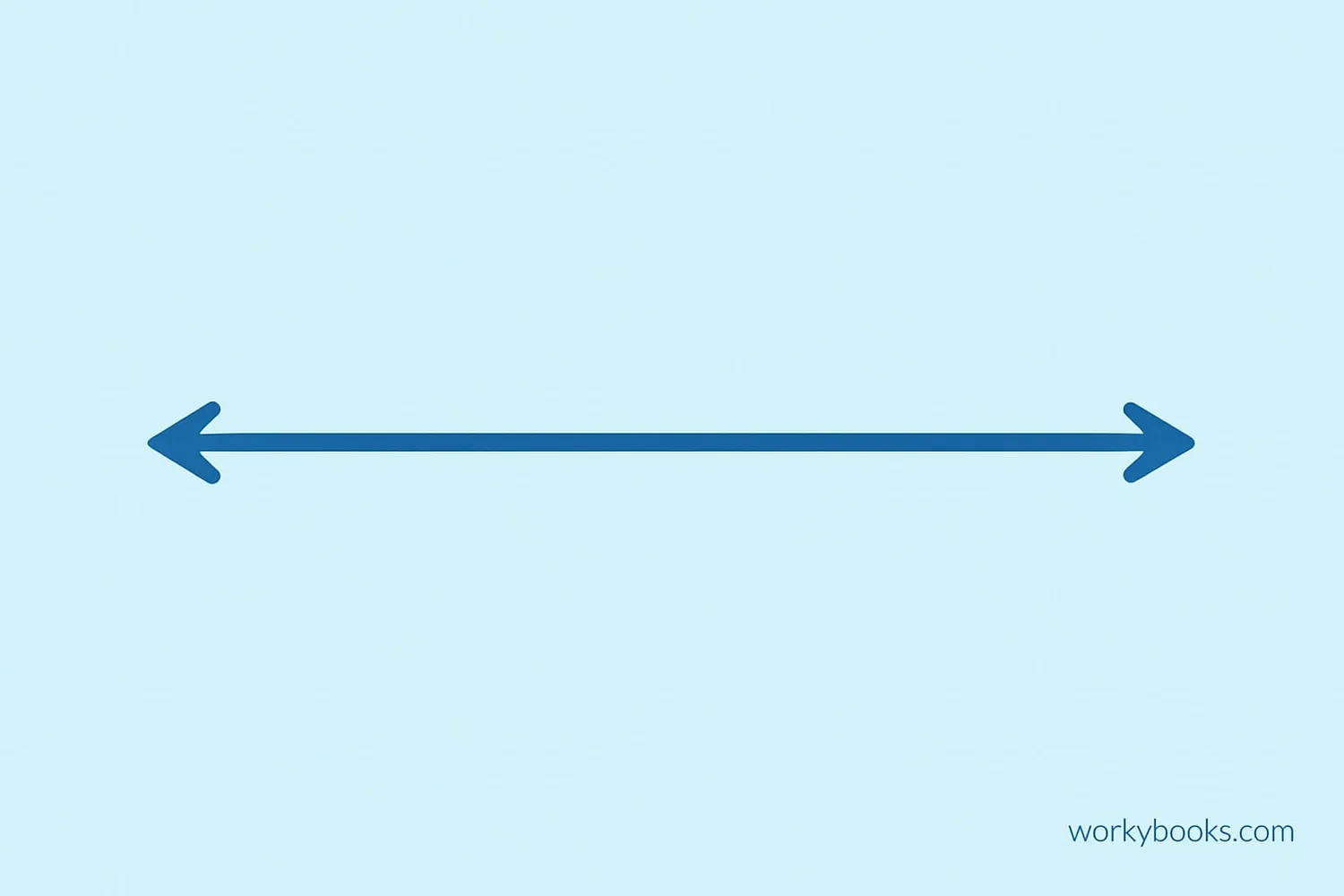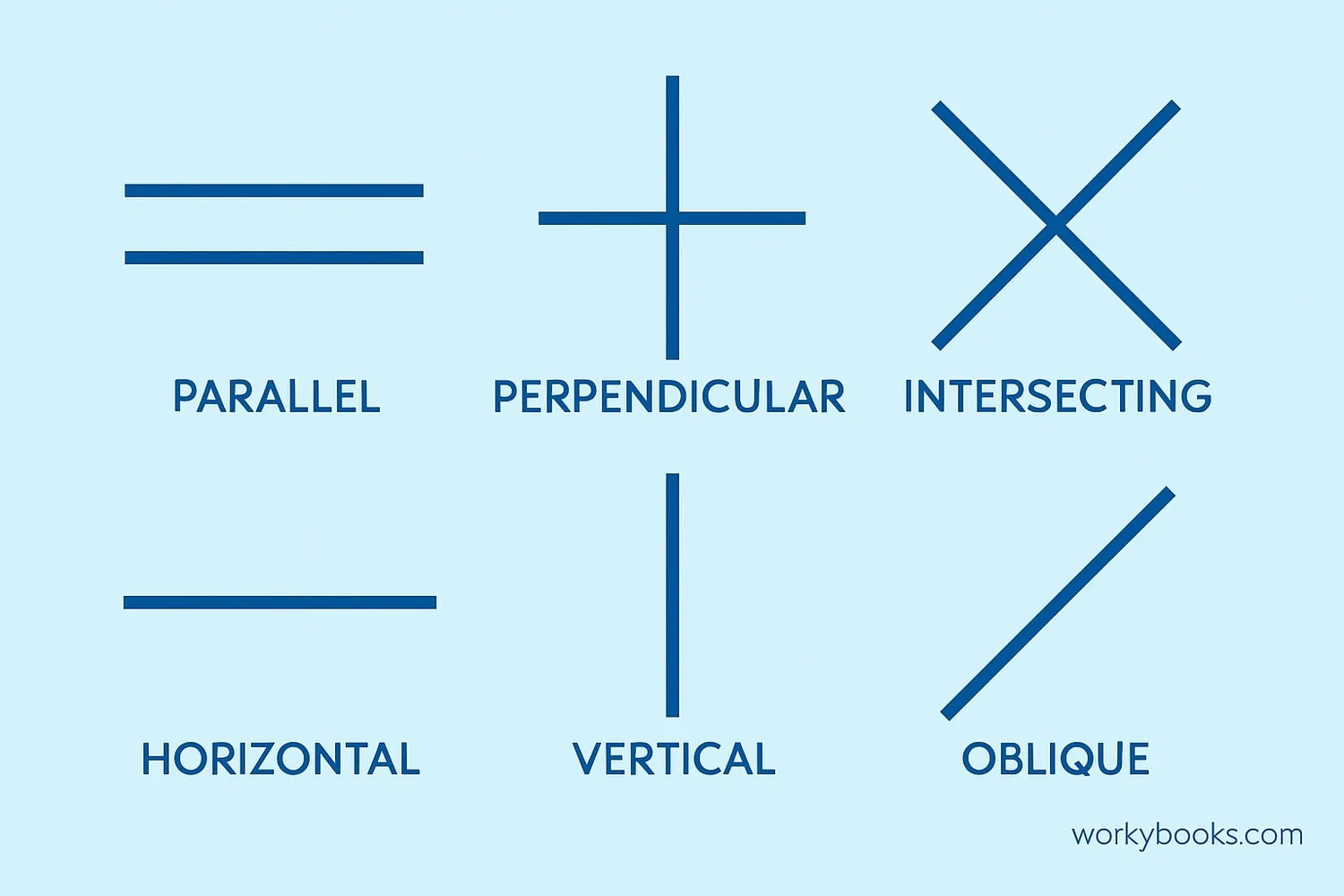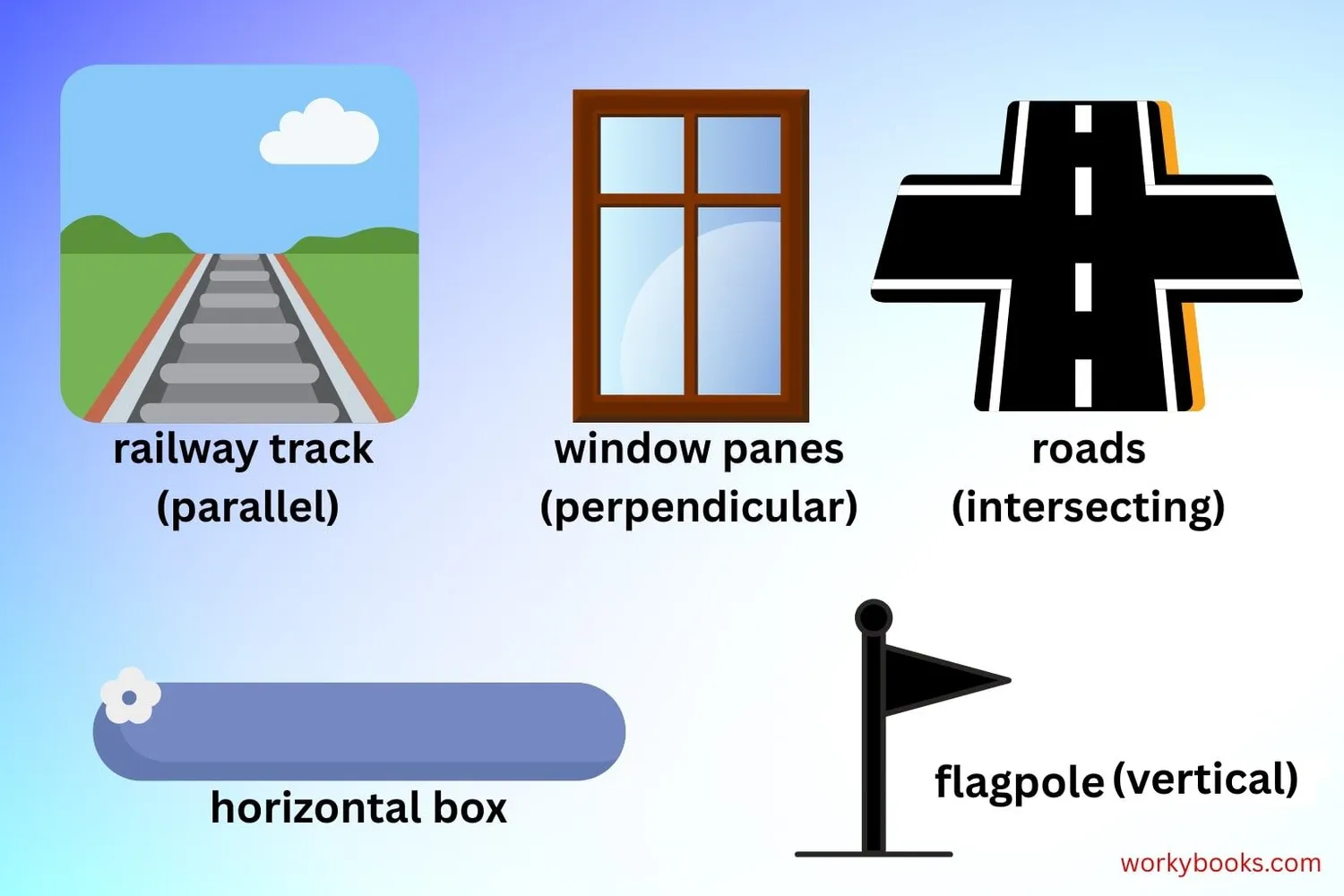Lines in Geometry - Definition, Examples, Quiz, FAQ, Trivia
Learn about different types of lines with visual examples and interactive activities
What is a Line in Geometry?

In geometry, a line is a straight path that extends forever in both directions. It has no thickness, no curves, and no endpoints. Think of it like a perfectly straight road that goes on forever in both directions.
Lines are one of the most fundamental concepts in geometry. They are made up of an infinite number of points placed side by side. We use lines to create shapes, angles, and patterns.
Important characteristics of lines:
- They are perfectly straight
- They have infinite length
- They have no thickness or width
- They are one-dimensional (only length)
Key Concept
A line is defined by two points. Any two points can be connected by exactly one straight line.
Types of Lines

Lines can be classified into different types based on their direction and relationship to other lines:
Parallel Lines
Parallel lines are always the same distance apart and never meet. They run in the same direction without touching.
Perpendicular Lines
Perpendicular lines intersect at a 90° angle (right angle). When two lines meet at a perfect corner, they are perpendicular.
Intersecting Lines
Intersecting lines cross each other at exactly one point. They can cross at any angle except 0° or 180°.
Horizontal Lines
Horizontal lines run left to right or right to left, parallel to the horizon. They are perfectly flat.
Vertical Lines
Vertical lines run straight up and down, perpendicular to horizontal lines. They stand perfectly upright.
Oblique Lines
Oblique lines are neither horizontal nor vertical. They are slanted at an angle that's not 90°.
Remember
Lines can also be classified as straight lines (with constant direction) or curved lines (with changing direction).
Real-World Examples

Lines are all around us in everyday life. Here are some examples:
Parallel Lines: Railway tracks, lines on notebook paper, stripes on a zebra
Perpendicular Lines: Corner of a book, window panes, plus sign (+)
Intersecting Lines: Roads crossing at an intersection, scissors blades, letter X
Horizontal Lines: Horizon, shelves in a bookcase, floorboards
Vertical Lines: Flagpole, sides of a skyscraper, tree trunks
Oblique Lines: Staircase railing, roof of a house, diagonal stripes on clothing
Observation Tip
Look for different types of lines around your home and neighborhood. How many can you find?
Lines in Geometry Quiz
Test your knowledge about lines in geometry with this 5-question quiz. Choose the correct answer for each question.
Frequently Asked Questions
Here are answers to common questions about lines in geometry:
Geometry Trivia
Discover interesting facts about lines in geometry:
Ancient Geometry
The ancient Egyptians used lines and geometry around 3000 BC to re-establish farm boundaries after Nile River floods. Their practical applications helped develop early geometric principles.
Straightest Line
Laser beams create some of the straightest lines known to science. They travel in nearly perfectly straight lines, which is why they're used in construction for accurate leveling and alignment.
Earth's Lines
The equator is an imaginary horizontal line around Earth's middle. Lines of longitude are vertical lines running from pole to pole. Together they create a grid system for navigation.
Lines in Art
Artists use different types of lines to create various effects. Horizontal lines suggest calm, vertical lines show strength, diagonal lines imply movement, and curved lines express fluidity.


